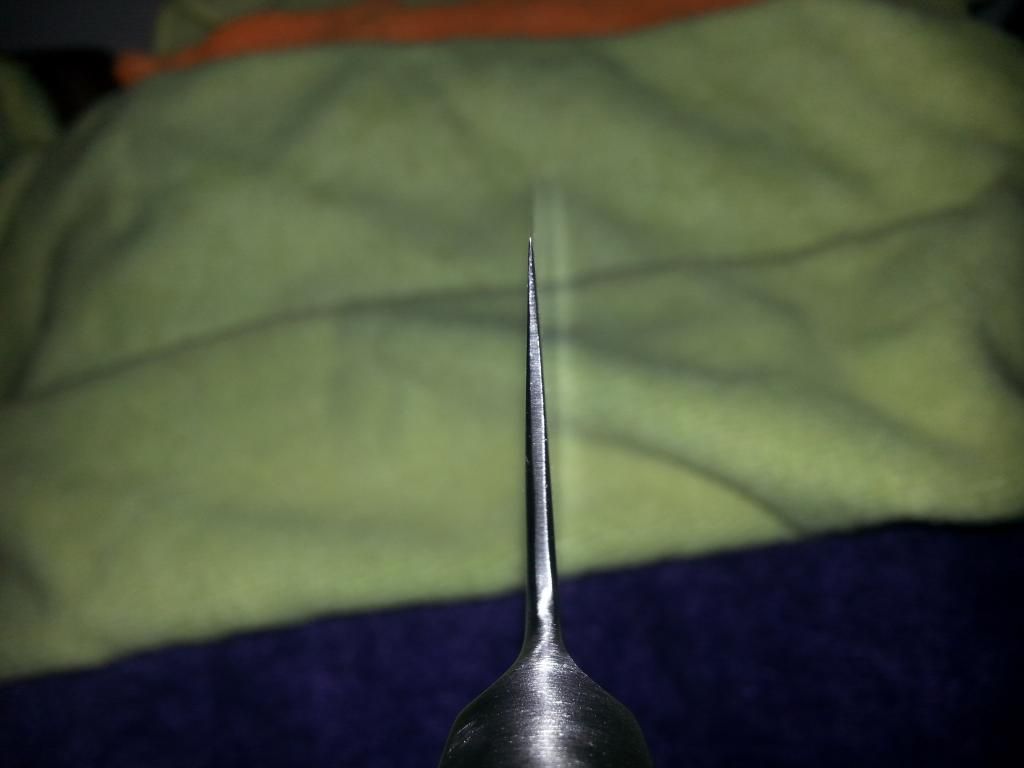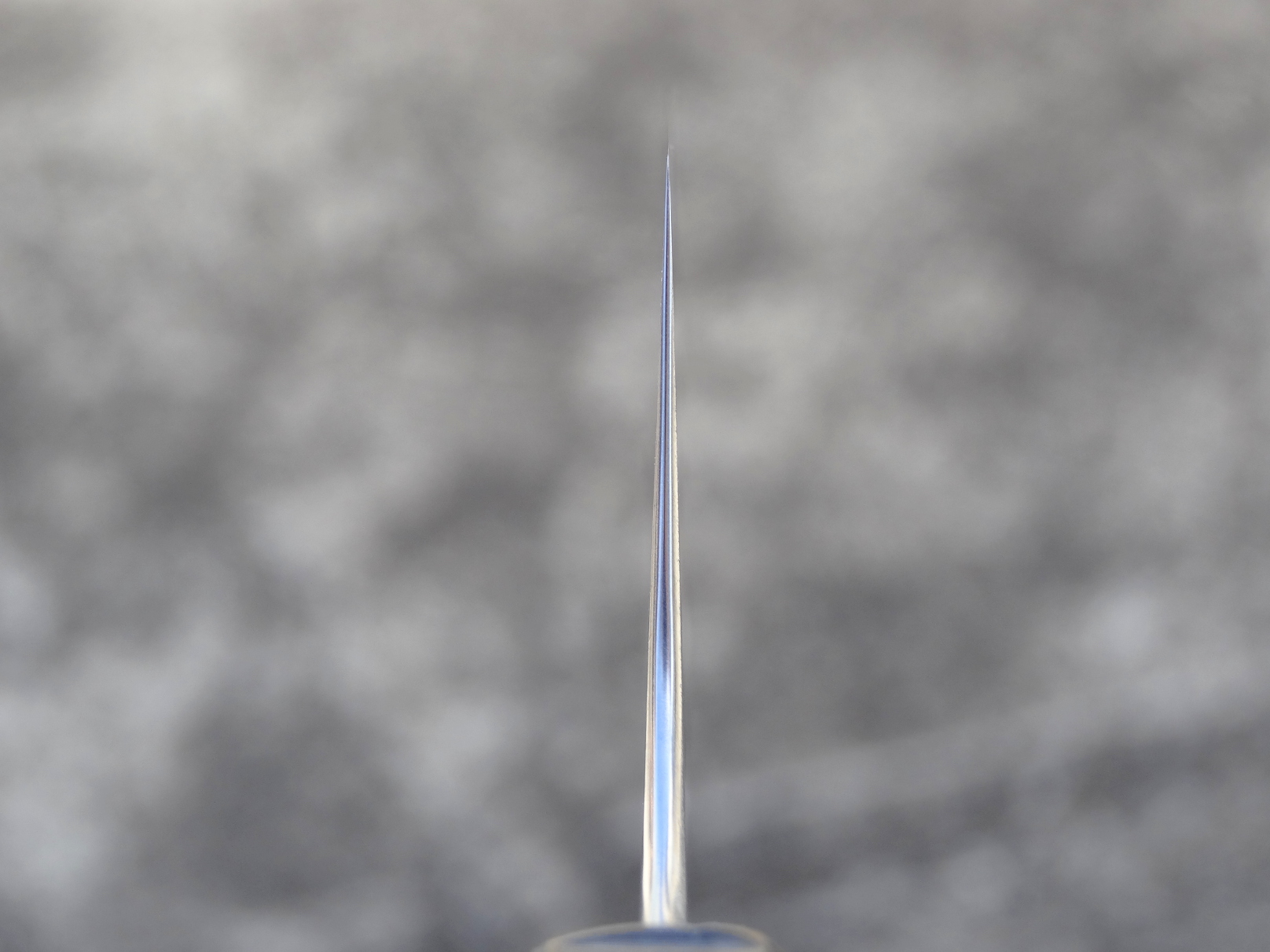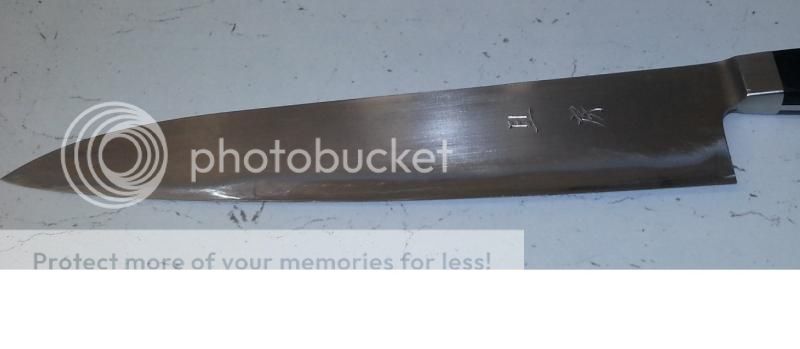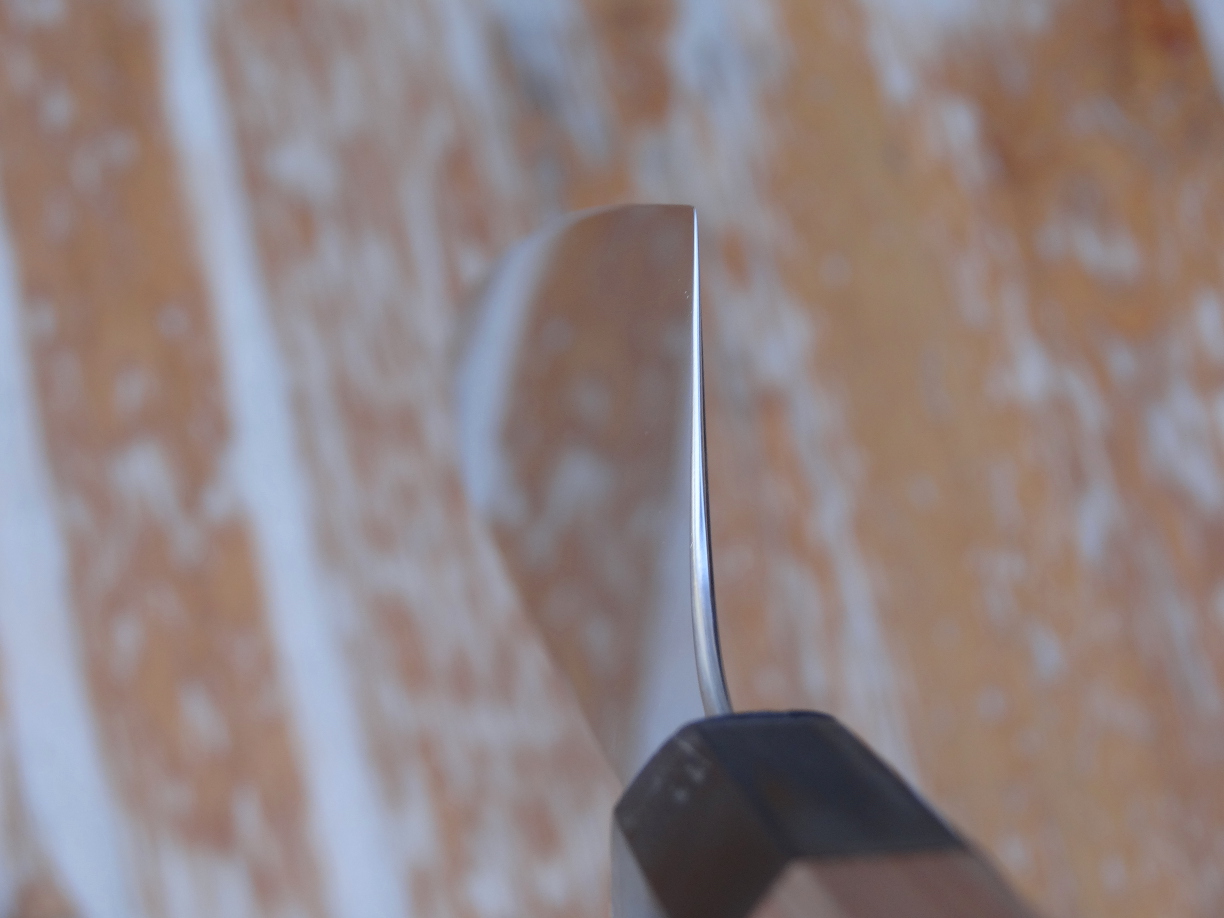What do you say about the thickness behind the edge of my 210mm Akifusa gyuto?
Until now I was sharpening it on EdgePro and I have noticed quite some shoulder developing. As I recently switched to free hand I said I will try to thin it a bit. After that I was checking the thickness behind the edge and to me it still looks a bit thick. At least the majority of shoulder is gone now.
What do you say experts?
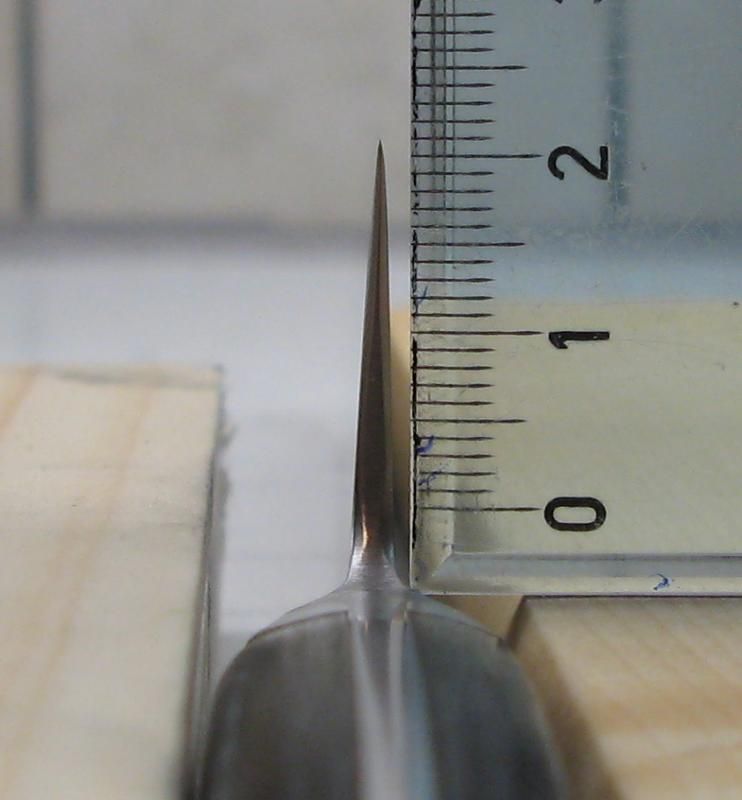
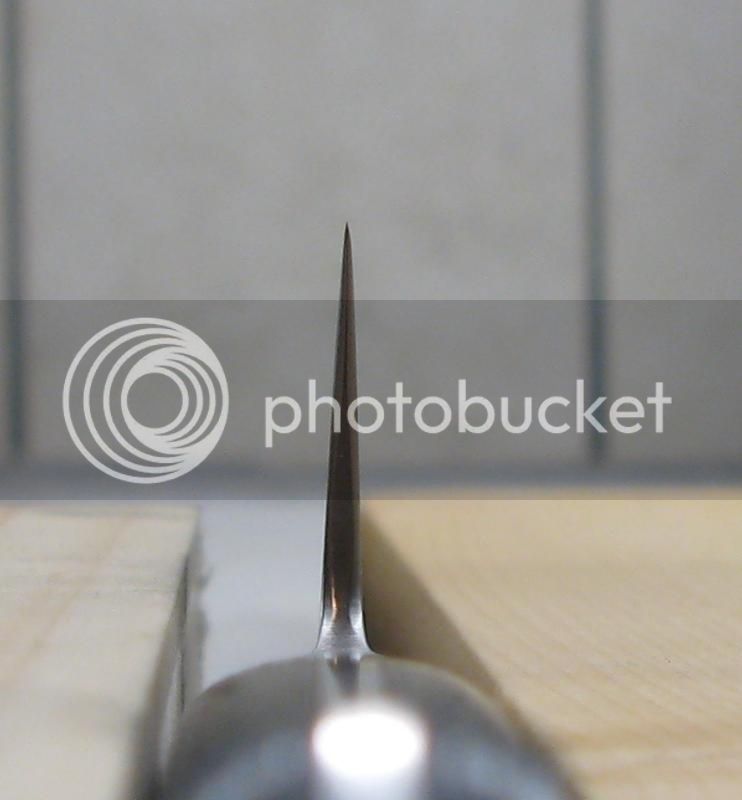
Until now I was sharpening it on EdgePro and I have noticed quite some shoulder developing. As I recently switched to free hand I said I will try to thin it a bit. After that I was checking the thickness behind the edge and to me it still looks a bit thick. At least the majority of shoulder is gone now.
What do you say experts?







